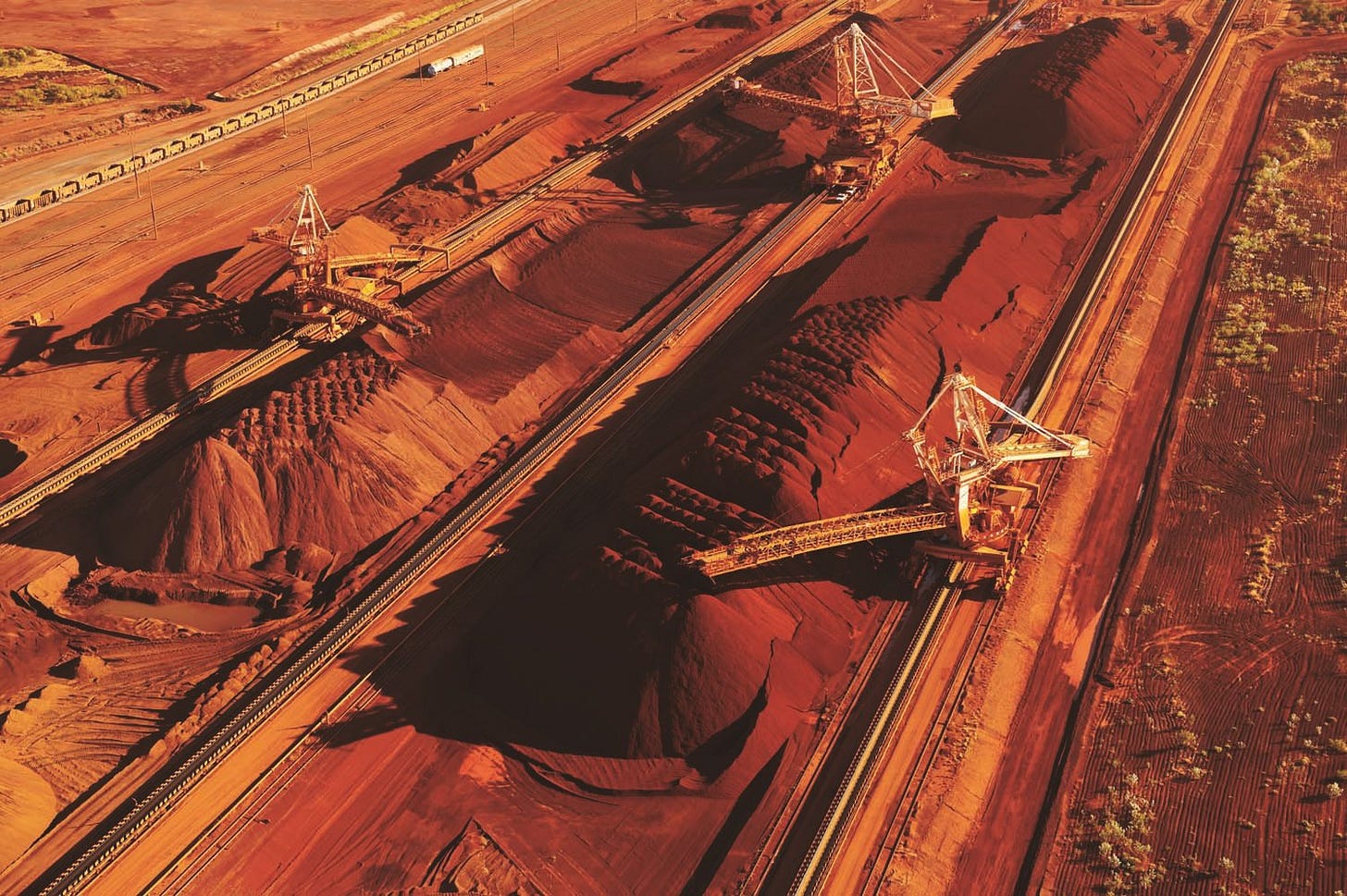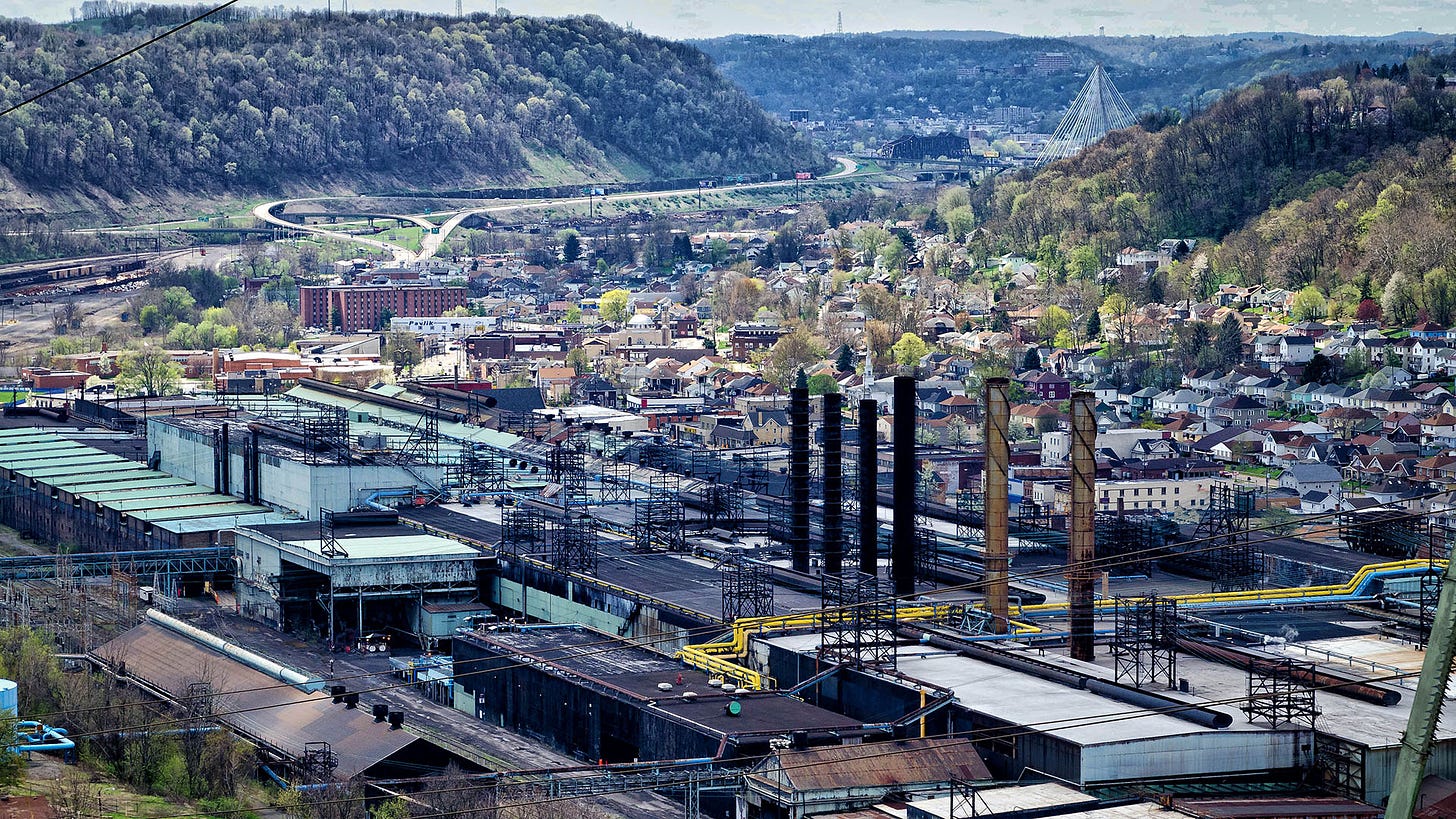Heavy Metal: Rockin’ Old 26 Fe
Are iron-air batteries the breakthrough renewable energy needs?

Renewable energy is growing rapidly, from both land and offshore wind power and solar technology, ranging from rooftop panels to vast fields of gleaming arrays. No technology is perfect, and both have their critics ranging from aesthetics to environmental and wildlife impacts, but two things are certain. Fossil fuels which built civilization as we know it now threaten our future on the planet, and far cleaner renewables are growing and a certainty. We must get greenhouse gasses under control.
Widespread adoption of solar and wind has been slowed by its inherit weakness, the on and off nature of its power delivery. If the wind doesn’t blow and the sun doesn’t shine, it’s lights out. Finding storage technology to avoid outages has been problematic. While lithium-ion batteries are light and pack enormous energy density, they are far too expensive to back up a wind and solar power grid at $200 a kilowatt-hour. Lithium has other significant downsides as well, such as enormous water needs. Mining one metric ton of raw ore requires on average 500,000 gallons of water. Additionally, lithium is a scarce element, comprising just 0.002 percent, of the Earth’s crust, with 35,000 tons mined each year. Lithium is also taken from some of the most water challenged places on the planet, and penalizes the poorest indigenous people. See my article on Thacker Pass, Nevada.
Lithium batteries have a nasty tendency to explode as well, as we have seen repeatedly. Here’s an article from Reuters this past July about a Dutch cargo ship catching fire, in which an emergency responder is heard saying, "The fire started in the battery of an electric car." There were 3,783 new cars on board, including 498 EVs.

By contrast, iron, the fourth most common element on the planet, which doesn’t happen to spontaneously combust constitutes 5.63 percent of the Earth’s crust, around 1,150,000,000 tons harvested a year. Although the numbers vary by specific plants and operations, producing iron ore requires far less water than lithium. The water can also be of very low quality, sewage level. Enter iron-air batteries.
To displace natural gas power plants, cheap battery storage is required. A 100-hour battery pack must cost no more than $20 per kilowatt-hour. Multi-day storage must be as cheap or cheaper than natural gas. Although lithium-ion batteries deliver great amounts of energy, a battery pack only delivers for about four hours. This makes them unsuitable for backing up the power grid that requires days of backup capability.
A little love for rust
Iron-air batteries are based on rust, something I definitely never loved before.
I live in the northeast, where snow and salt are a fact of life and so far remain so in spite of global warming. Let’s hope that continues. The first car I ever made payments on as a young man was my beloved 1978 Mazda RX-7. I zoomed over twisty, back roads in my slick shifting, fine handling, little sports car. However, by the time I sold my baby, chunks of her fell off when I shut the doors. Tears. How I hated rust.
Iron air batteries were invented in 1878 and studied in the 1960s by NASA. At that time there was no practical application for this technology which produces very cheap, but also very heavy batteries.
Oxidation occurs when air interacts with iron. Oxidation releases electrons. An iron air battery is a model of simplicity, consisting of just an iron anode and an air-breathing cathode suspended in an electrolyte solution with a permeable separator. Unlike lithium batteries, no additional rare elements such as cobalt, mined by virtual slaves in the Democratic Republic of Congo, many of them children, is required.
Iron air batteries are the lowest-cost rechargeable battery technology known. When iron is exposed to air, it triggers the chemical process of rust, that oxidation I mentioned. This releases electrons that are separated and sent to the grid, producing electricity when demand exceeds production, during those dark nights and on those windless days. When wind and solar produce excess energy, the process is reversed, electrons flowing back into the battery, releasing the oxygen to cause “unrusting” the metal, turning it back into iron.
These batteries are succeeding in lab testing. If iron-air batteries hold what they promise, I may love rust after all.
Form Energy
Form Energy is based in Somerville, Massachusetts, with additional facilities for testing iron-air batteries in Berkeley, California, manufacturing capabilities in Pittsburgh, Pennsylvania and a future manufacturing facility in Weirton, West Virginia. Weirton is a historic steel town with the local, first-hand knowledge to work iron. More than 750 people will be employed when manufacturing reaches full capacity. Manufacturing is anticipated to begin in 2024.

Form Energy’s founders include Mateo Jaramillo, former head of battery development for Tesla, (interview and video here), and Professor of Materials Science and Engineering, MIT and Form Energy Chief Scientist Yet-Ming Chiang. They are among the foremost battery scientists in the world.
From Form Energy’s site:
To run the grid reliably and affordably, we need new cost-effective technologies capable of storing electricity for multiple days. In pursuit of this, we have reinvented and optimized the iron-air battery for the electric grid. The active components of our iron-air battery system are some of the safest, cheapest, and most abundant materials on the planet — low-cost iron, water, and air. Iron-air batteries are the best solution to balance the multi-day variability of renewable energy due to their extremely low cost, safety, durability, and global scalability.
Our first commercial product using our iron-air technology is optimized to store electricity for 100 hours at system costs competitive with legacy power plants. This product is our first step to tackling the biggest barrier to deep decarbonization: making renewable energy available when and where it’s needed, even during multiple days of extreme weather, grid outages, or periods of low renewable generation.
Form Energy investors include Bill Gates and Jeff Bezos, not my favorite people on the planet, but certainly ones I can’t ignore. One could say they are not generally fools with their money. Investors also include the iron and steel giant ArcelorMittal, and MIT’s The Engine.
Many of my articles have been stern warnings about where the #ClimateEmergency is taking us. We just witnessed the unfathomable and sickening devastation that happened to the people of Derna, Libya, 11,300 dead at last count that I can find (over two weeks ago, which disgusts me) and nearly 43,000 homeless. New York City just got inundated with rain again, flooding the city. It’s also sinking as ocean levels rise. There’s even a questionable $52 billion plan to save it. The truth is, you can’t fight the ocean, and you can’t fight the Earth. We must live within the rules of nature that provide us a sustainable environment. The ultimate question is if political will and human behavior can rise to the challenge. We have the science and knowledge to get the job done.
The temperature will continue to rise, it’s guaranteed by the amount of CO2 already in the atmosphere that will linger for hundreds of years, even after we stop burning fossil fuels. We do, however, have a significant opportunity with renewables and attacking shorter lived, but far more powerful methane emissions. Ultimately the challenge is to cease burning fossil fuels, whatever sacrifices we must make.
It appears iron-air batteries have real potential to be a game changer that make it possible to nearly eliminate greenhouse gas emissions. Let’s hope that is so.



Iron-air batteries appear to be legit. Time is of the essence now, we're well off-track on limiting warming to 1.5° C. I may be writing about some advances in wind power soon as well. I believe a near zero carbon world is technically possible. Heat pumps are very important in this goa, and induction cooking is amazing. Time to get off the gas!
Excellent and quite hopeful. The rustbelt is back in business. Thank you Geoff!